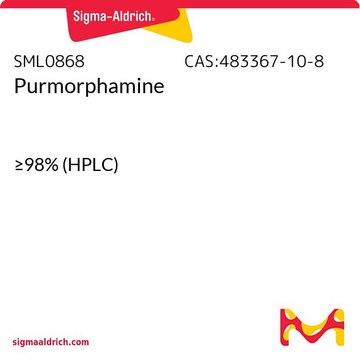SML1045
Thiazovivin
≥98% (HPLC), powder, Rho Kinase inhibitor
Synonym(s):
N-Benzyl-2-(pyrimidin-4-ylamino)thiazole-4-carboxamide
About This Item
Recommended Products
Product Name
Thiazovivin, ≥98% (HPLC)
Assay
≥98% (HPLC)
form
powder
color
, white to beige to brown
solubility
DMSO: 20 mg/mL, clear
storage temp.
−20°C
SMILES string
[s]1c(nc(c1)C(=O)NCc3ccccc3)Nc2ncncc2
InChI
1S/C15H13N5OS/c21-14(17-8-11-4-2-1-3-5-11)12-9-22-15(19-12)20-13-6-7-16-10-18-13/h1-7,9-10H,8H2,(H,17,21)(H,16,18,19,20)
InChI key
DOBKQCZBPPCLEG-UHFFFAOYSA-N
Application
Biochem/physiol Actions
Storage Class Code
11 - Combustible Solids
WGK
WGK 3
Flash Point(F)
Not applicable
Flash Point(C)
Not applicable
Choose from one of the most recent versions:
Certificates of Analysis (COA)
Don't see the Right Version?
If you require a particular version, you can look up a specific certificate by the Lot or Batch number.
Already Own This Product?
Find documentation for the products that you have recently purchased in the Document Library.
Customers Also Viewed
Articles
Naive pluripotent stem cells are located within the epiblast of mature blastocysts. These primitive “ground-state” cells may be cultured in vitro using specialized media and small molecule inhibitors.
Our team of scientists has experience in all areas of research including Life Science, Material Science, Chemical Synthesis, Chromatography, Analytical and many others.
Contact Technical Service










